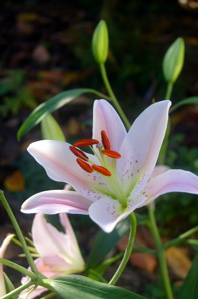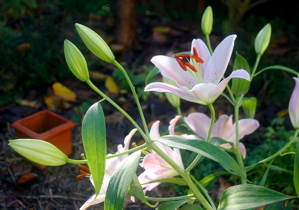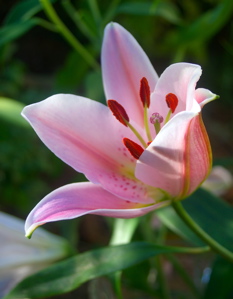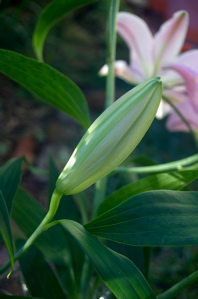I usually don’t plan out much of my stitch placement before I start a Mountmellick embroidery design. Sometimes I’ll have some of an idea of what I’d like to use, and maybe a vague idea of where, or perhaps a particular treatment for a specific motif, but much of the time I just figure it out as I go along.
I’ll get out my photo album filled with photos that I was allowed to take as reference when I was writing our book “Mountmellick Embroidery: Inspired by Nature”, when I was in Ireland and England quite some years back. I use these to inspire me, in terms of stitch combinations and ideas for stitch placement. These photos are invaluable for me, and for others I’d highly recommend soaking up what you can see in photos of historical examples of Mountmellick embroidery, if you’re designing your own Mountmellick embroidery.
But let’s take a look at some gorgeous lilies. I find them so elegant.








When thinking about how to interpret motifs into stitch, I also think about the plants that I will be depicting. If its a rose, then I need to think about smooth velvety petals, leaves with jaggedy edges, and sharp thorny stems. As we’re doing lilies, then I need to think about lilies and LOOK at lilies. Lilies generally have smoothish petals, with some ridges going down them. Sometimes they have spots close to the centre of the flower. The leaves also often have ridges (though Mountmellick lilies don’t seem to be shown like that, so maybe they were different lilies than I am thinking about.)
But on the whole, lilies are a smoothish looking plant, with long graceful curves for the leaves and petals, and smoothish stems. I love the stamens and sepals (if that’s what they are called) of lilies – the bits sticking out of the centre of the flower – as they are very pronounced and prominent, usually calling for some nice fat bullion knots…
The reason why I study how the plant looks is because that affects my stitch choice. If I want a smooth and velvety look, then that’s not going to be best served by a spiky looking stitch. If I want spiky, then smooth stitches aren’t going to be the best choice either.
Of course, I don’t slavishly follow this, but its good to keep it in mind.

 White Threads is the blog of Yvette Stanton, the author, designer, publisher behind Vetty Creations' quality needlework books and embroidery products.
White Threads is the blog of Yvette Stanton, the author, designer, publisher behind Vetty Creations' quality needlework books and embroidery products.

This extends to other subjects, too, of course – smooth stitches and threads for dressed stone, textured for rough stone, and so on.
You’ve got some gorgeous photos there!